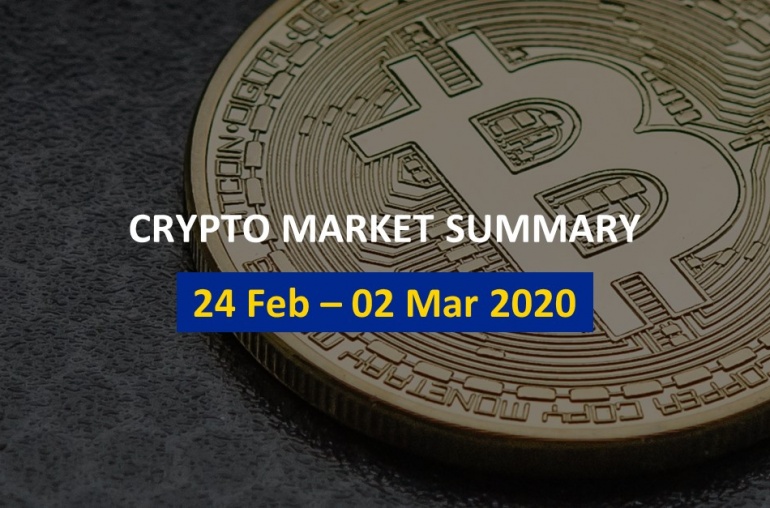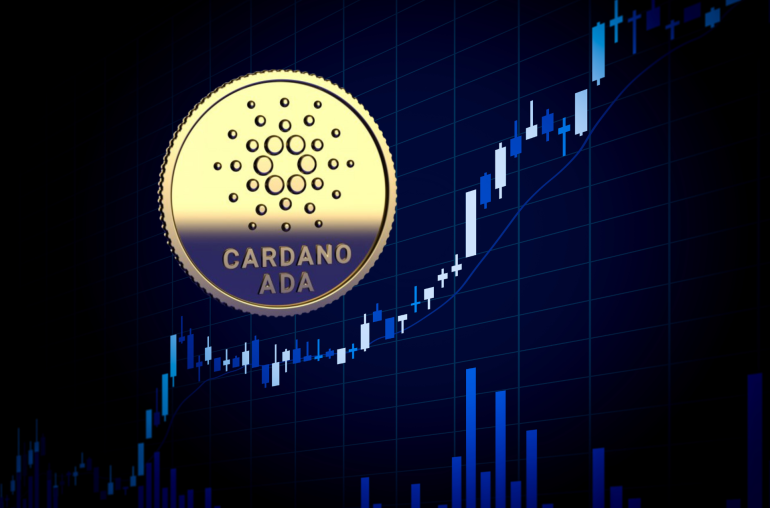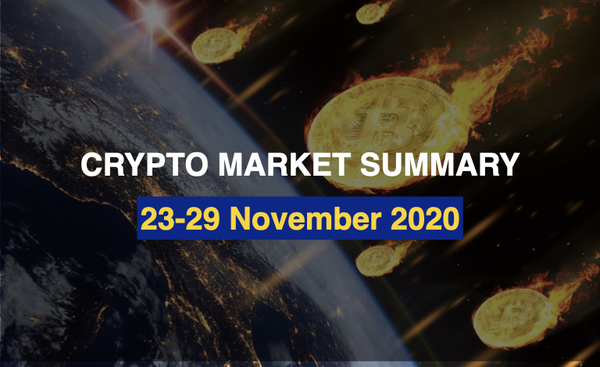
Markets are looking to start the week bullish on optimism that coronavirus vaccinations may occur at a speed faster than anticipated. As vaccine manufacturers submit their solutions for approval, there is a sense that the long coronavirus winter may be in sight.
As a result Asian markets opened stronger this week, with Tokyo’s Nikkei 225 closed for a holiday, while Sydney’s ASX 200 (+0.55%), Seoul’s KOSPI (+1.53%) and Hong Kong’s Hang Seng Index (+0.18%) were all up in the morning trading session.
As Coronavirus Cases Rise, So Do Stocks
Coronavirus case numbers are continuing to soar in the United States and Europe.
Even a proposed travel bubble between Singapore and Hong Kong was burst when the latter experienced a fresh revival in infections.
And despite the prospect of an effective coronavirus vaccine now closer than ever, everywhere you look, it seems as if our battle against the pandemic is taking one step forward and three steps back.
Yet the only other thing rising almost in lockstep with coronavirus cases? Stocks.
In any other epoch, circumstances like these would have been the stuff of dreams for short sellers, traders who bet that the market will fall.
So far this month, short sellers have absorbed US$163 billion in losses, adding to an already frustrating year that has seen short selling profits made in March, completely wiped out.
Views that would seem logical on the surface – that U.S. elections would cause interim shocks, that a recession and unemployment would kill the rally, and that soaring coronavirus case numbers would send markets plummeting – have failed to materialize.
Whatever the reason – many investors point to the U.S. Federal Reserve as the main culprit – the past year has taught that sometimes the best strategy for investors is to do nothing – just like what the lockdown has taught so many of us as well.
The S&P 500, a broad benchmark of the U.S. economy is on track for its best month since 1980 and fewer than 50 stocks on the index have fallen, while 98% have gained since their lows in March.
The Russell 2000, an index measuring small-cap companies in the U.S. is up 16%, while even value stocks, are seeing a comeback.
So challenging has it become to be a pessimist in a sea of positivity, that short sellers are just short of giving up, with short interest accounting for just 1.6% of market capitalization on the S&P 500, its lowest level since 2004.
And even when U.S. Treasury Secretary Steven Mnuchin wrote to U.S. Federal Reserve Chairman Jerome Powell for the return of unused funds the Fed had earmarked for lending and markets, a small dip in the markets, was followed by a sharp rally in response. All of which seem to point to a strong bull case for stocks and other risk assets.
Because even if a coronavirus vaccine promotes a robust revival in business, Powell and his friends at the Fed are unlikely to turn off the money taps anytime soon and such a two-pronged boost to markets – with low interest rates and economic growth – have led to some to some of the sharpest rallies in the past.
Being a bull is challenging enough in the worst of times, but it’s turning out to be somewhat ironic that it’s impossible to be a bear in what should be the worst of times.
Inflation? What’s that?
You don’t worry about swimming lessons when your ship is already sinking, it’s a bit too late for that.
Yet investors seem to be behaving as if just because inflation has been so low for so long, there’s no need to prepare for it.
To be fair, forecasting inflation is frighteningly difficult – even central banks struggle to predict it, let alone induce it.
Part of the problem of course is that the classical economics texts which most central bankers will no doubt be familiar with, assume that ceteris paribus, increasing the money supply pushes inflation higher.
But somehow, years of rate cutting, quantitative easing and money machinations have only driven asset prices higher, while leaving the cost of pretty much everything else undisturbed.
That may be set to change.
Prices of traded goods are now starting to rise, in part because Asian growth is humming.
Chinese export prices have risen year-on-year, and excluding oil, industrial commodity prices are now higher than they were at the end of last year.
Even if nothing else changes (ceteris paribus), between now and 2021, these year-on-year comparisons will start to look increasingly dramatic.
And like an underwater earthquake in Asia causing a tsunami off the coast of California, these price trends are making themselves felt in the U.S., with U.S. import prices already rising strongly and durable goods prices on a tear.
There are also signs that services inflation is rising.
But because much of the western hemisphere is still in the throes of a pandemic, demand has been muted, which has prevented a sudden surge in prices.
The rollout of an effective coronavirus vaccine could change that in a heartbeat.
And what will happen to prices when that occurs is anyone’s guess.
Because much of the world’s civil aviation fleet is rotting on the ground, transportation, both domestic and especially international, has become more difficult and expensive.
And because it’s not likely that global travel will turn gangbusters again on a dime, aviation as a whole is likely to lift off slowly, meaning that many of the constraints for international commerce and logistics will persist for some time.
All of which suggests that the path of least resistance, when, rather than if, demand picks up, will be higher prices.
Central banks have already pledged that they will let that happen, not because they necessarily have any say in the matter, but more as a tacit acknowledgement that whatever they do doesn’t make much of a difference anyway.
That means central banks in the rich world like the Fed are unlikely to put up short term rates, while also holding down long term rates, at a time when government borrowing is already massive.
Such moves would mean persistently loose monetary policy, and countries that do nothing would probably see their currencies fall, pushing imported inflation even higher.
So far the biggest risk of imported inflation comes from the world’s biggest factory – China. The coronavirus pandemic has given the Middle Kingdom a renewed sense of self-confidence – its domestic market is sufficiently large to be self-contained and self-sufficient, two aspirations expressed at a recent Chinese Communist Party plenary session.
China’s central bank, the People’s Bank of China, has of late also proved that it is willing to allow the renminbi to appreciate and is up some 6% against the dollar this year alone.
What happens then when the world’s factory charges more for goods in renminbi that’s worth more vis-à-vis other currencies?
Imported inflation.
Like so much of everything these days, inflation, if and when it reappears, is likely to be made in China. And the time to prepare for that is now.
Ethereum Steals Some Thunder from Bitcoin
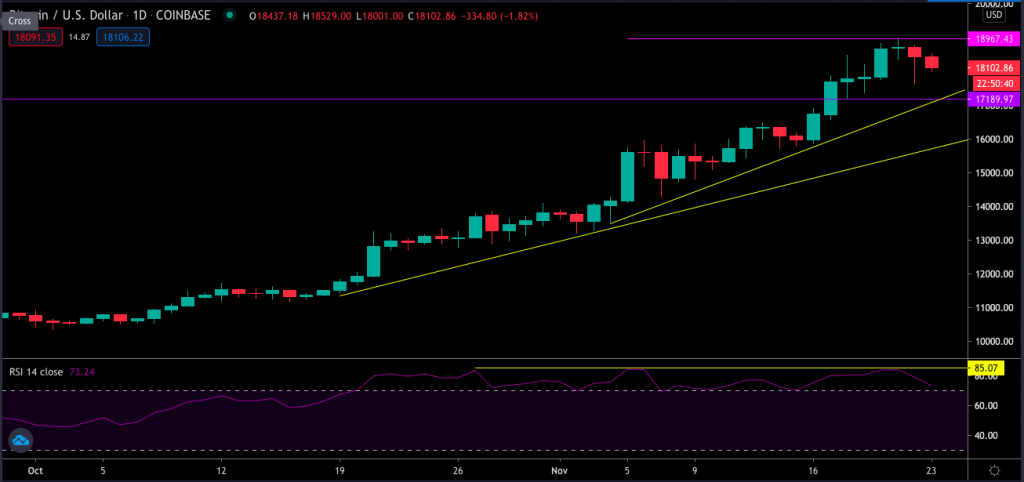
While Bitcoin continues to grab headlines with its meteoric rise in recent months, it’s been Ethereum which has quietly surged over the past week.
Bitcoin now holds below US$19,000, like a cobra poised to strike that much-vaunted level of US$20,000 and potentially throwing itself into uncharted territory.
For traders looking for a Bitcoin bull run, the risks are aplenty.
As Bitcoin edges ever-closer to US$20,000, a new all-time-high could either spark a dramatic selloff in a rerun of 2017, or it could mark a new level of support.
Given that Bitcoin is now around US$18,100, the upside versus the downside risk has meant that many traders have already headed for the door, deeming it safer to lock in profits now, hold on to dry powder and decide later whether to head back in again.
And while Bitcoin may be closing in on its all-time-high, the world’s second largest cryptocurrency by market cap, Ethereum, is nowhere close.
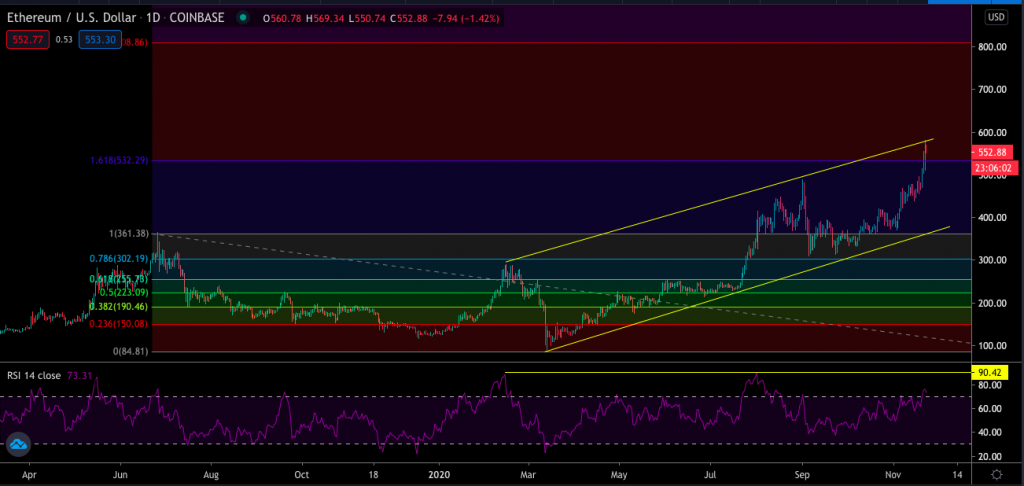
Over the past week, Ethereum passed US$500 per Ether, the first time it did so since June 2018, but is still well off its high of US$1,500 set in January that year.
Up almost fourfold since March 2020, when the coronavirus pandemic wiped out global markets, Ethereum has been soaring ever since, albeit at a pace far more measured than Bitcoin.
And that leaves Ethereum with plenty of upside potential.
There are also plenty of developments for Ethereum as well, including its transition to proof-of-stake, a method of securing the blockchain which is touted to be more energy efficient than the electricity-hungry proof-of-work that cryptocurrency mining is notorious for.
Ethereum has also enjoyed robust growth from an expanding interest in decentralized finance or DeFi, which uses blockchain technology to recreate traditional financial instruments, including loans and insurance.
DeFi has the potential to facilitate more efficient and cheaper money flows, while creating new ways for savers, particularly the unbanked or those with smaller deposits, to earn from their holdings.
Revolving around decentralized applications known as dApps, DeFi allows users to borrow or lend funds, go long or short on a range of assets, trade digital assets or earn interest akin to a savings account, without the need for centralized intermediaries like banks and the like.
This cornucopia or cryptocurrency financial services are anchored and governed by rules embedded in programs called smart contracts.
Unlike traditional software programs, smart contracts, once deployed on the blockchain are immutable and unalterable – they’re literally baked into the block, which provides the contractual certainty of execution and eliminates counterparty risk.
Smart contracts are by no means perfect though, with many potentially vulnerable to unknown and unknowable vulnerabilities.
But because smart contract code is deployed on the blockchain where creators often submit such code to community audit before deployment, there is a sense of “vigilantism” that forms a sort of self-regulating force to improve the development of smart contracts.
Because almost 98% of dApps are built on the Ethereum blockchain, Bitcoin holders looking to generate yield on their Bitcoin deposits have to convert their Bitcoin into “wrapped Bitcoin” or wBTC using BitGo in order to gain access to DeFi products and services.
And some are suggesting that that opportunity is also powering Bitcoin. For the first time in Bitcoin’s history, it’s actually possible to buy Bitcoin as a potential hedge for inflation, while at the same time generating a yield from Bitcoin itself, making it better than gold in that sense.
But what makes that all possible isn’t necessarily Bitcoin, but Ethereum.
*Produced in partnership with leading digital assets hedge fund Novum Alpha.


